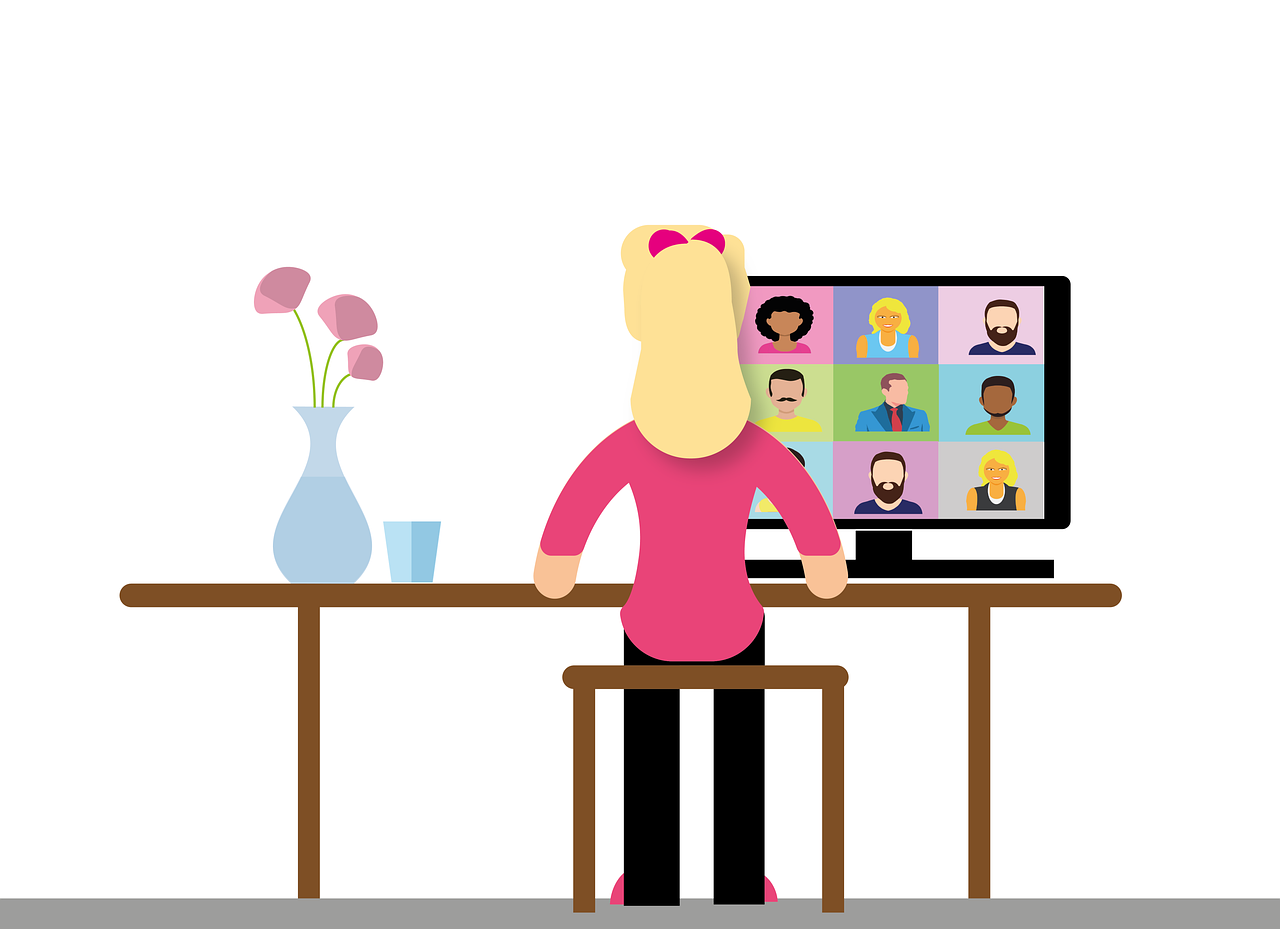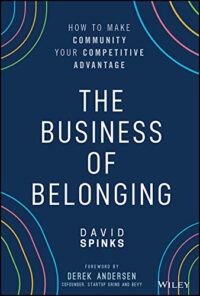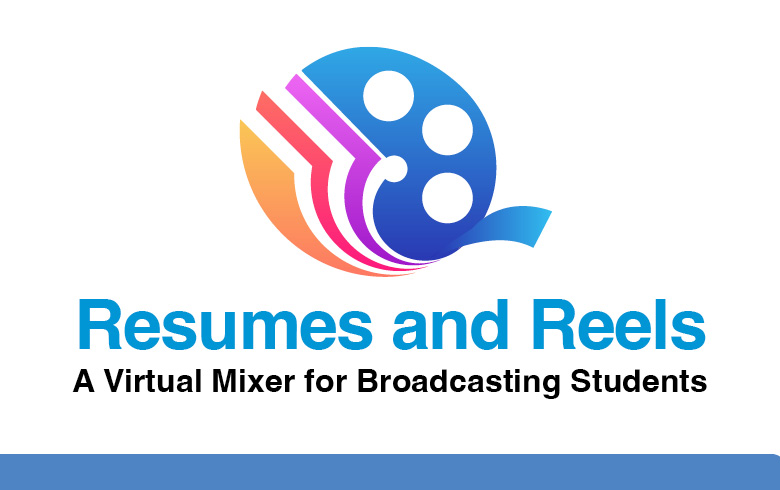As I’ve invested more and more time understanding how community building works for brands and how it might benefit broadcasters, I’ve been looking for ways to put the concepts into practice. Ultimately, I’ve come to the conclusion that a solid community-building strategy should be based on four actionable pillars: in-person events, virtual events, online groups (such as a Facebook or LinkedIn group), and content. Some of these pillars are probably very familiar to your radio station, and you may in fact already have a few firmly in place. Today, I want to focus on the most misunderstood of these four pillars — virtual events.
Before we delve into it, a reminder that I am using a very specific definition for the word “community”: A group of people who gather for a shared purpose. A community is not the same thing as an audience.

What Do We Mean By “Virtual Event”?
When you build a community, you are building a space where members can gather. This space can be a permanent structure, like a church, the local YMCA, or Xavier’s School for Gifted Youngsters. But the space can also be transient, like a conference held in a convention center. The space created for community members can also be physical, virtual, or — better yet — a combination of the two. For example, Podcast Movement hosts their annual conferences where podcasters can gather in person, but they also host a large Facebook group where their members can communicate with each other.
Virtual events aim to create a space where community members can interact with each other. For this reason, webinars should be considered content, not virtual events. After all, community members cannot interact with each other during webinars. While livestreaming videos where the presenter can react to text comments from viewers are more interactive than webinars, they still don’t create a space where members can interact with each other, so they should also be considered content, not virtual events. For the purposes of community building, virtual events must allow the attendees to interact with each other, not just the event host.
The interaction between community members at virtual events happens in real time. This is what makes virtual events different from online groups, such as Facebook groups, LinkedIn groups, and private groups hosted on platforms like Circle or Guild. In online groups, the interaction is asynchronous; I post now, somebody comments on that post a few hours from now, and I reply to the comment tomorrow. By contrast, at virtual events, the interaction is synchronous.
Virtual Events Supplement In-Person Events
The COVID-19 pandemic led to rapid adoption of platforms that enable synchronous online communication, such as Zoom and Slack. At the same time, it distorted our view of the role of virtual events. Many of us came to see virtual events as a substitute for in-person events because we needed them to be during a global crisis. But this is the wrong way to think about virtual events. They should not be a substitute for in-person events, but rather a supplement to them.
I am a big fan of hosting large annual in-person events, and supplementing them throughout the year with regular small virtual events. For example, a brand could host an annual 10,000-person conference, and supplement this with monthly virtual happy hours with a few hundred attendees.
The Strategic Role of Virtual Events
Virtual events can play a number of different but critical roles in community building. First, they are a great way to capture email addresses. Building an email list is a powerful way to continually engage with both potential and existing members. When you capture people’s email addresses, you can drip content out to them, invite them to participate in your online group, and invite them to future events.

Virtual events are also a great way to deepen ties to members. In his book The Business of Belonging, David Spinks identifies four levels of community member participation:
- “Passive members are folks who are at the start of the commitment curve. They’re participating in smaller, lower-commitment ways, mostly consuming content, learning, and listening.”
- “An active member is someone who participates by joining in the discussion and creating content.”
- “A power member is someone who is so committed to the community, so engaged, that they contribute at a very high rate.”
- “[Leaders] are the folks who take on roles like moderating a digital space, become an admin of a local subgroup, or launching a local community chapter. They create and facilitate spaces and experiences for other members.”
Virtual events can help move members of the community up the “commitment curve” by giving them opportunities to contribute and participate in new ways.
Finally, when the virtual events become large enough, they can also be monetized through sponsorship.
Consistency is Key to Virtual Event Success

Spinks explains a crucial element when using virtual events to build community:
“The key is repetition and consistency. When your members can experience your community in a consistent, repetitive way, it will make it easier for them to develop a habit of coming back and they’ll know exactly how to participate.”
When I first began hosting virtual events, I viewed them as special occasions, and like a wedding or a funeral, I tried to make sure all the key people showed up. Now I view them as a regular casual occurrence, like hanging out at Central Perk or MacLaren’s Pub on a Tuesday night. Some weeks you can make it, some weeks you can’t, but you can always count on a group of friendly faces being there.
If you’re going to use virtual events to build community, launch a regular series of events, such as a virtual meetup on the first Thursday of every month. For your first few events, you will have to personally invite people to ensure that folks show up. But if you host compelling events regularly and promote them consistently, eventually, they will take on a life of their own.
An Example: Using Virtual Events to Connect Broadcasting Students and Employers
One of the biggest challenges that today’s broadcasters face is finding the next generation of talent. Frankly, this industry doesn’t hold the appeal for young people that it once did. The hours can be grueling, the pay is often low, and who need a radio tower to reach the masses when you have an iPhone?
Our industry needs to do more to court young talent. It’s a problem I’ve been working on with several organizations, including the NAB, the Broadcast Education Association, the Wisconsin Broadcasters Association and the Michigan Broadcasters Association. In doing so, we’ve started to use virtual events to connect broadcasting students with broadcasting professionals. These events are still in their infancy, but we’ve hosted these meetups on a virtual event platform called Remo. I like Remo because it has a simple, intuitive interface that allows event attendees to focus on building relationships, not operating the tech.


This Wednesday, I am producing an event for the NAB and the BEA called “Resumés and Reels.” Josh Miely of the NAB and Heather Birks of the BEA have enlisted a panel of professionals to critique the resumés and demo reels of graduating students to help them land their first jobs in broadcasting. Our esteemed panel providing feedback includes Mike McVay of McVay Media, Jen Harriger of Hearst Television, Heather Dunn of Talent Dynamics, and Melissa Luck of Morgan Murphy Media. But this event isn’t just a virtual presentation; students who attend will also have an opportunity to speak to professional broadcasters and gain their insights. Our hope is that this event fosters connections that help both students and employers, and that we can eventually turn this into a recurring series. Over the long haul, we hope to build a talent pipeline by building community.
If you know any broadcasting students who would benefit from attending, they can get the details on the event here.
If anybody from your broadcasting company would like to attend — especially talent coaches or recruiters — please email me for more information.
If your radio station is looking to build a community around a segment of its audience, virtual events can play a pivotal role. It’s a great time to start experimenting with them, and to think about how they fit into a larger community building plan.
- A Simple Digital Treat to Thank Your Radio Listeners This Thanksgiving - November 13, 2023
- Interview Questions When Hiring Your Radio Station’s Next Digital Marketing Manager - November 6, 2023
- A Radio Conversation with ChatGPT: Part 2 – Promotions - October 30, 2023





Leave a Reply